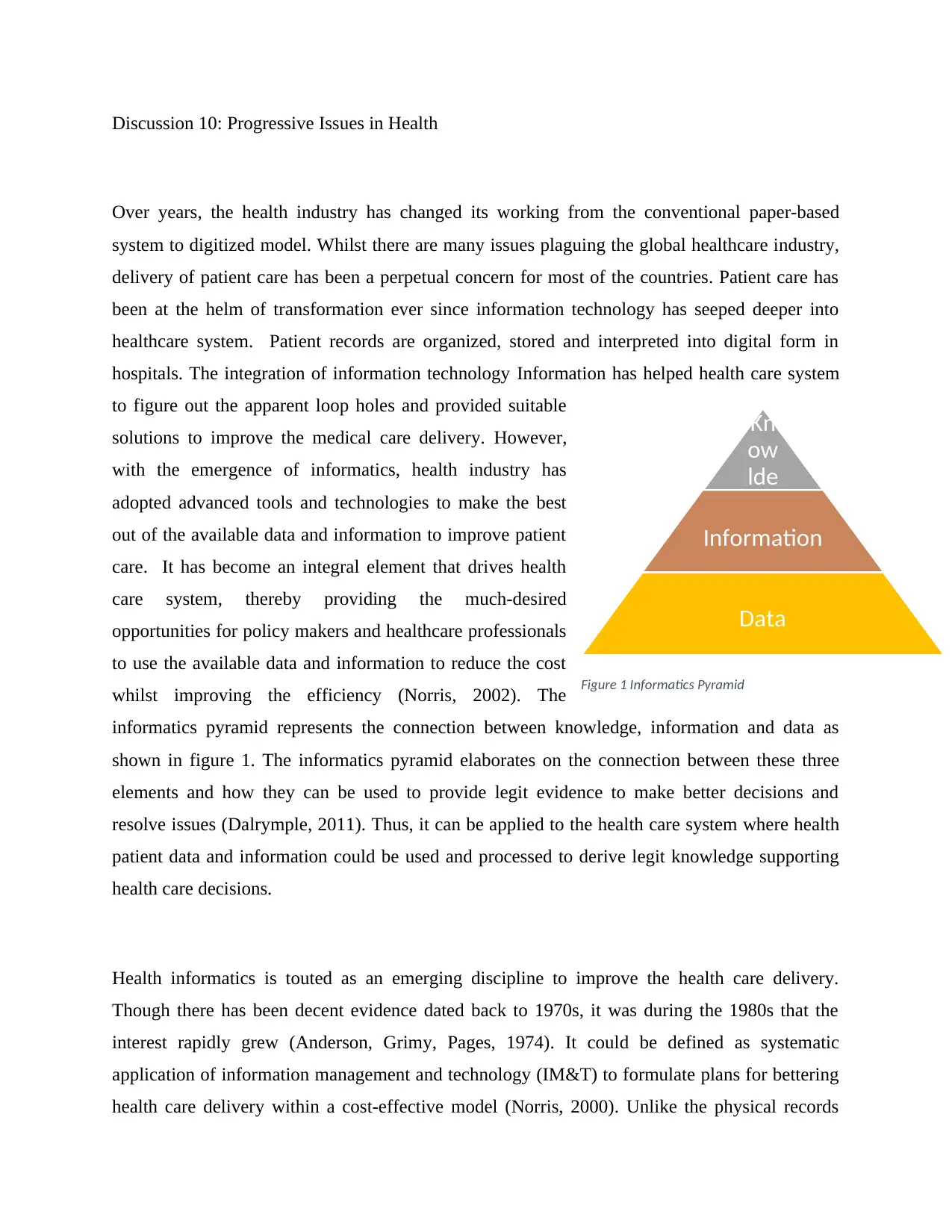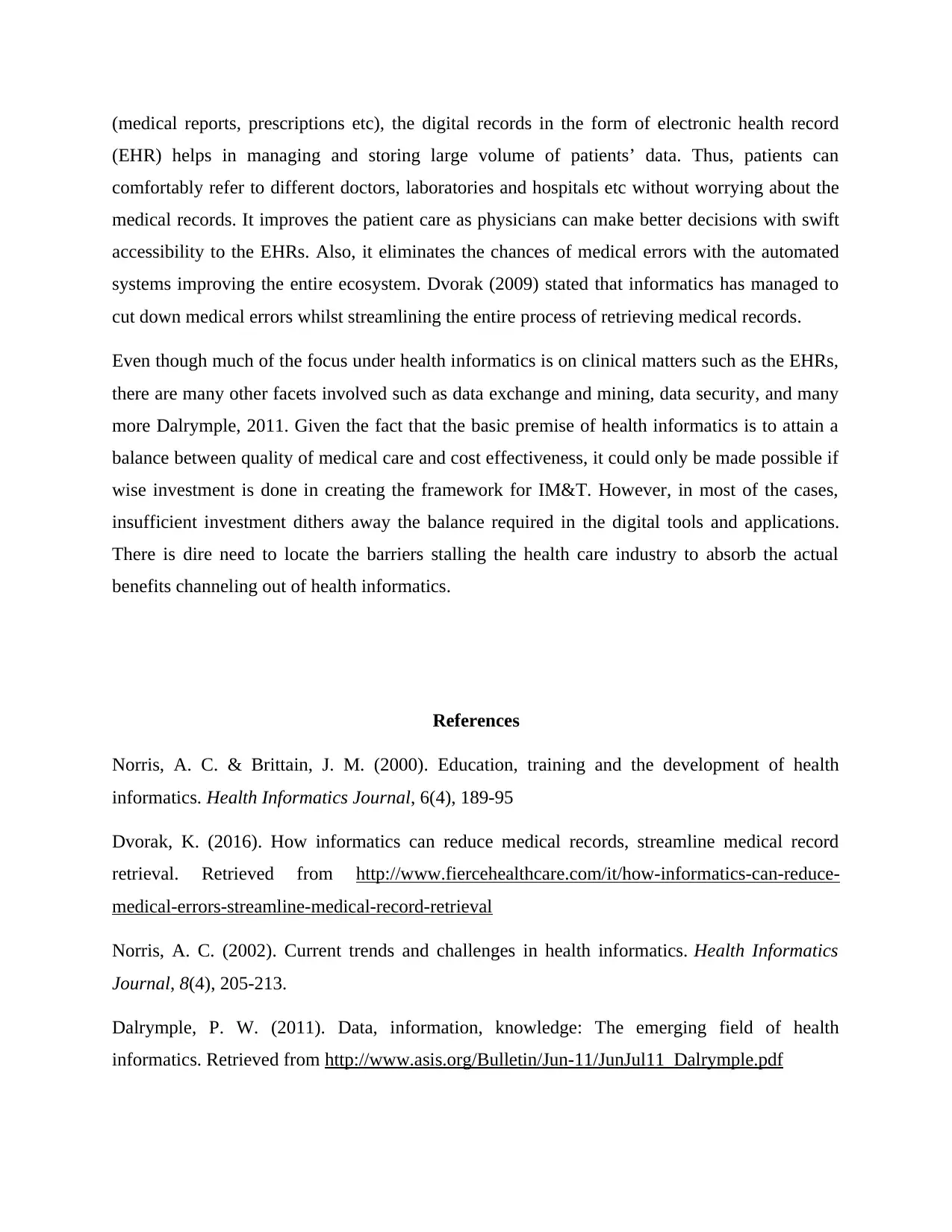Discussion: Health Informatics, Patient Care and Future of Healthcare
VerifiedAdded on 2020/04/07
|3
|749
|36
Discussion Board Post
AI Summary
This discussion post examines the evolution of healthcare from paper-based systems to digital models, focusing on the impact of health informatics on patient care. It highlights the informatics pyramid, which illustrates the relationship between data, information, and knowledge in making informed healthcare decisions. The post discusses the benefits of electronic health records (EHRs), including improved accessibility, reduced medical errors, and streamlined processes. It also addresses challenges such as insufficient investment in information management and technology (IM&T) and the need to overcome barriers to fully realize the advantages of health informatics. The post references key articles and studies to support the arguments, providing a comprehensive overview of the current trends and issues in the field of health informatics and patient care. The discussion emphasizes the importance of balancing quality of care with cost-effectiveness through strategic investments in digital tools and applications.
1 out of 3










![[object Object]](/_next/static/media/star-bottom.7253800d.svg)